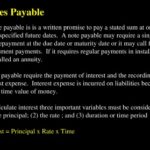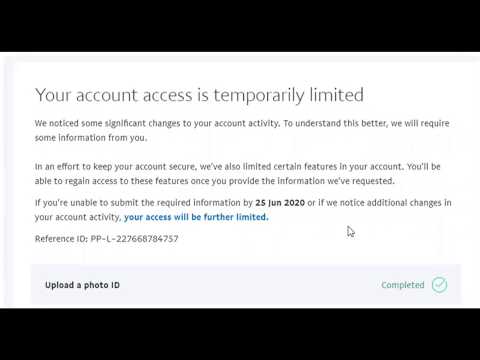NetSuite Applications Suite Customer Deposit
You can view a customer record and click the Financial subtab to see if the customer has any unapplied deposits recorded. The Customer Deposit Balance field displays the total amount of unapplied deposits for the customer. With the A/R feature enabled, the Customer Deposit general ledger account is generated along with the first Customer Deposit record. Even if you do not have a permission to create accounts, you will still be listed in the system notes as the Customer Deposit account creator. The Customer Deposit account tracks each deposit as an Other Current Liability. The SOAP Schema Browser includes definitions for all body fields, sublist fields, search filters, and search joins available to this record.
What is the use of customer deposits?
When a customer makes an advance payment for an order or project, you can record the funds received as a customer deposit. These payments are recorded in your general ledger as a liability until the goods or services are actually delivered and do not affect the customer's accounts receivable balance.
It is unearned revenue to the company or seller, and it is also an overpayment of customer’s invoices treated as accounts receivables. It follows the accounting principle; the deposit is a current liability that is debited and sales revenue credited. A customer deposit could also be the amount of money deposited in a bank. Since there are no cash earnings, the money is debit to the bank and credit to the customer’s deposit account.
Featured Articles
There may also be times when you are the seller and have agreed to let your customer make a deposit on an order and to pay the balance after you deliver the goods or services. For example, this down payment might cover the cost of your raw materials. Regardless of the reasons behind down payments, accounting for them correctly is important. Below you will learn how to account for customer deposits, whether you are making or receiving a deposit for an order. When company XYZ agrees to manufacture a product for a customer, it is common to request a down payment. When the payment is made, the company will debit cash and credit the customer deposit account as a current liability.
- When you are new to the customer deposit business and accounting, it is advisable to outsource experts’ services in the field.
- It provides the company with cash flow to cover initial production or setup costs and reduces the risk of non-payment after the goods are delivered or the service is completed.
- You can set up a deposit or retainer process for your company in QuickBooks Online.
- Even if you do not have a permission to create accounts, you will still be listed in the system notes as the Customer Deposit account creator.
- The Customer Deposit account tracks each deposit as an Other Current Liability.
If for some reason the company cannot fulfill the order, it would generally be required to return the deposit to the customer, unless other terms have been agreed upon. Similarly, if the customer cancels the order, whether the deposit is refundable or not would typically depend on the terms of the agreement. Let’s assume that Ace Manufacturing Inc. agrees to produce an expensive, custom-made machine for one of its customers. Ace requires that the customer pay $50,000 before Ace begins to design and construct the machine.
Interested in automating the way you get paid? GoCardless can help
When you have entered a customer deposit, you can generate a payment receipt for the customer. When the order is filled, the deposit is applied against the invoice and the liability is canceled out. The customer deposit record is defined in the tranCust (customers) XSD.

The process starts with creating an invoice and synchronizing it to get the final accurate invoice. It has become a more manageable process using technology; all customer deposit accounting is done from one central point. In accounting, a customer deposit is simply repayment for the purchase of future goods and services.
When to Require a Customer Deposit
Since the bank is not earning this money, the amount is recorded by the bank with a debit to Cash and a credit to Customer Deposits. The retainer item can now be selected when creating an invoice or sales receipt for a deposit or retainer payment. NetSuite tracks the date when each deposit is applied to a customer invoice. If you use the Consolidated Payments feature, any deposits made by a customer or its subcustomers can be applied to any of the open invoices in the customer hierarchy. This practice is common in many industries, particularly in those that involve significant production or delivery times, large or customized orders, or high upfront costs.
When you are new to the customer deposit business and accounting, it is advisable to outsource experts’ services in the field. Find out more from GoCardless to help you with ad hoc payments or recurring payments. GoCardless will sort your automated payment collection, cutting down on the amount of admin your team needs to deal with when chasing invoices.
Step 2. Create a retainer item
Suppose a furniture manufacturer, WoodCraft Inc., receives an order from a customer for a custom-made dining table. The cost of the table is $2,000, and WoodCraft Inc. requires a 50% deposit before it begins the work. To reduce the number of results to view, you can change the report period to display a narrower date range or select the small https://kelleysbookkeeping.com/c-corp-vs-s-corp-partnership-proprietorship-and/ triangle next to a customer’s name to collapse their details. You can also use the asynchronous equivalents of SOAP web services list operations. For information about asynchronous operations, see SOAP Web Services Asynchronous Operations. For more information about request processing, see Synchronous Versus Asynchronous Request Processing.

Follow this step if you keep the money from customer retainers and deposits in a separate trust account. First, you need to create a liability account to track the amount of the retainers you receive from your customers. You can now see each customer’s retainer or deposit balance, as well as a record of transactions that have affected this balance. What Is A Customer Deposit? You can track how much of a retainer or deposit you are holding for each customer from the Balance Sheet report. The steps are similar to creating a Sales receipt except that you won’t select a Deposit to account until you receive payment against the invoice. Instead of creating Sales receipts (Option 1), you can invoice customers.
